TL;DR: LinkedIn ghostwriting involves hiring a writer to create LinkedIn content, helping busy professionals maintain an engaging online presence.
While it can boost visibility and leads, it has costs and requires a good match with the ghostwriter.
Short on time? Skip to the summary below.

The rise of LinkedIn ghostwriting
Before she started posting regularly on LinkedIn, Sarah, a marketing VP, had a virtually non-existent online presence.
“I used LinkedIn mainly to like other people’s posts,” she recalls. “I’d go months before posting my own content — often status updates about my company.”
When she stumbled upon a viral LinkedIn writer in 2022, she was fascinated by how well his content always performed.
“His posts would rack up hundreds of likes, shares, and comments in just a few hours. He was constantly on my feed, even though we weren’t connected on LinkedIn.”
She learned that the content creator doubled as a ‘ghostwriter’ for executives like her. “You could almost pinpoint exactly when an executive started using one.”
Six months later, Sarah’s LinkedIn presence had completely transformed.
She was no longer just a LinkedIn wallflower but a power poster sharing regular, engaging content around marketing that resonated with her network.
“I started receiving messages from colleagues and industry peers complimenting me on my posts,” Sarah recalls.
“They were surprised to see me sharing such insightful content consistently. Some even asked if I had hired a PR agency!”

But the benefits went beyond compliments. Sarah’s follower count increased by 59%, and her posts’ engagement rate went up by 48%. Her profile views also saw a significant boost, increasing by around a third.
More importantly, Sarah noticed that her LinkedIn content creation was having a real impact on her work. “I started getting invited to speak at industry events,” she says.
“I also noticed an increase in inquiries about our company’s services. My LinkedIn posts 100% improved my personal brand and benefitted my company.”
Sarah’s story is just one example of the rise of LinkedIn ghostwriting and its effects on brand awareness.
As busy professionals recognize the value of a strong LinkedIn presence, more and more are turning to a ghostwriter to help them create consistent, high-quality content to attract potential customers.
And as Sarah’s experience shows, the results can be game-changing.
LinkedIn, the world’s largest professional social media platform, boasts over 930 million members in 200 countries and regions worldwide.
But as a business owner, principal, or executive, writing great content regularly takes time and effort. That’s where LinkedIn ghostwriting comes in.
Let’s dive deep into the LinkedIn ghostwriting process, covering everything from what it is and how to hire a ghostwriter to the ethical considerations of ghostwriting.
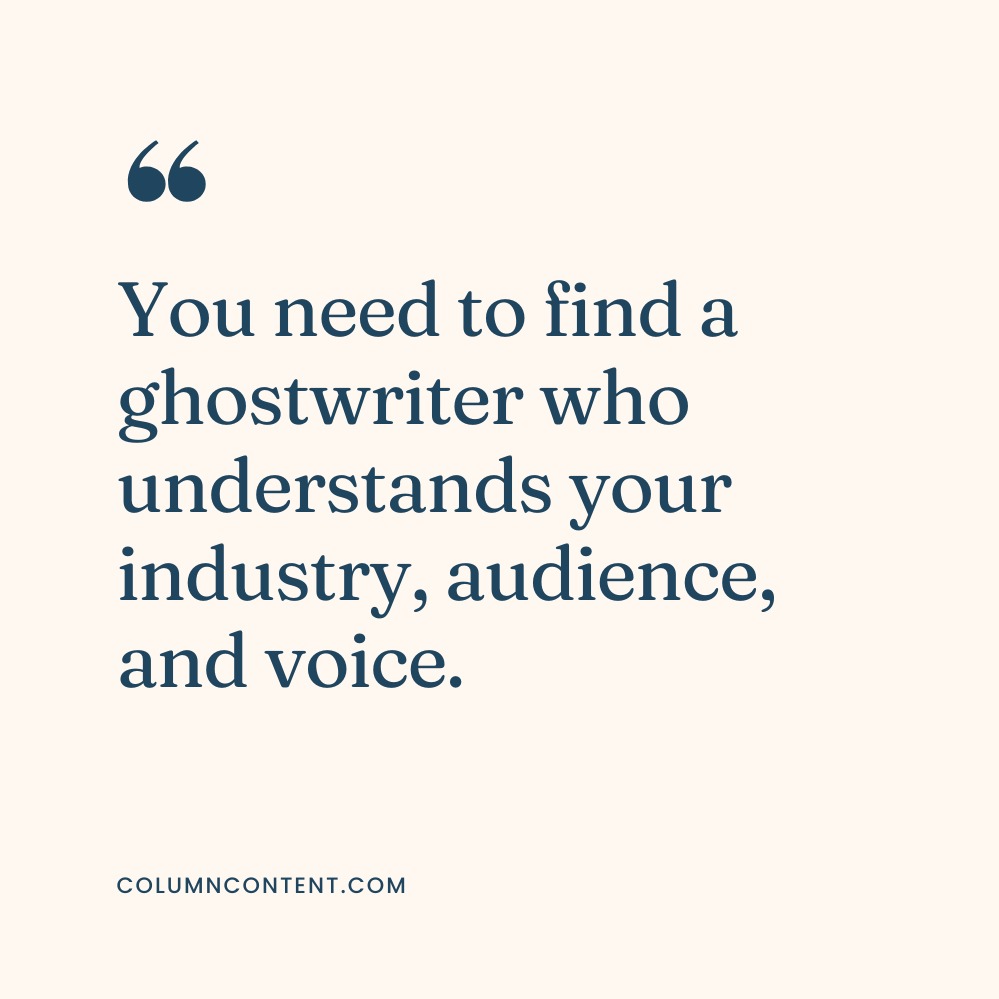
What is LinkedIn ghostwriting and why consider it?
LinkedIn ghostwriting is when a professional writer creates compelling content to build your LinkedIn presence.
A professional ghostwriter understands how to craft posts that encourage engagement, expand your reach, and build your online presence.
Just like actors have stunt doubles, executives on LinkedIn often have ghostwriters crafting high-performing content for them.
These writers work behind the scenes, much like ghosts, hence the term ‘ghostwriting‘.
Such content marketing attracts clicks, conversations, and conversions, helping them grow their following and business revenue.
Most importantly, it frees up their time to focus on their real jobs.
Of course, LinkedIn ghostwriting isn’t without its pitfalls. Here are some pros and cons of LinkedIn ghostwriting:
Pros: Why LinkedIn ghostwriting can be a game changer
For busy professionals, ghostwriting comes as a breath of fresh air. There are several compelling reasons why:
- Time savings: Penning a thoughtful, well-researched LinkedIn article or post can easily take hours. A ghostwriter can take that off your plate, freeing up your precious time.
- Consistent presence: With a ghostwriter on board, your LinkedIn content marketing never takes a back seat. Even when you’re on vacation or swamped with work, your LinkedIn game stays strong.
- Expert writing: Not everyone is a born writer, but ghostwriters are. They know how to craft compelling thought leadership content that engages your audience and positions you as an industry expert.
Cons: The potential pitfalls of LinkedIn ghostwriting
While there’s a lot to love about ghostwriting, it’s not without its drawbacks. Here are the key ones to keep in mind:
- Matching your voice: One of the biggest challenges of ghostwriting is nailing your unique voice. You’ll need a writer who not only writes well but can also mimic your communication style.
- Confidentiality concerns: As the name implies, ghostwriting is all about anonymity. Your ghostwriter must be okay with staying in the shadows and not revealing that they’re behind your content.
- Cost: High-quality ghostwriting isn’t cheap, so you’ll need to budget accordingly.
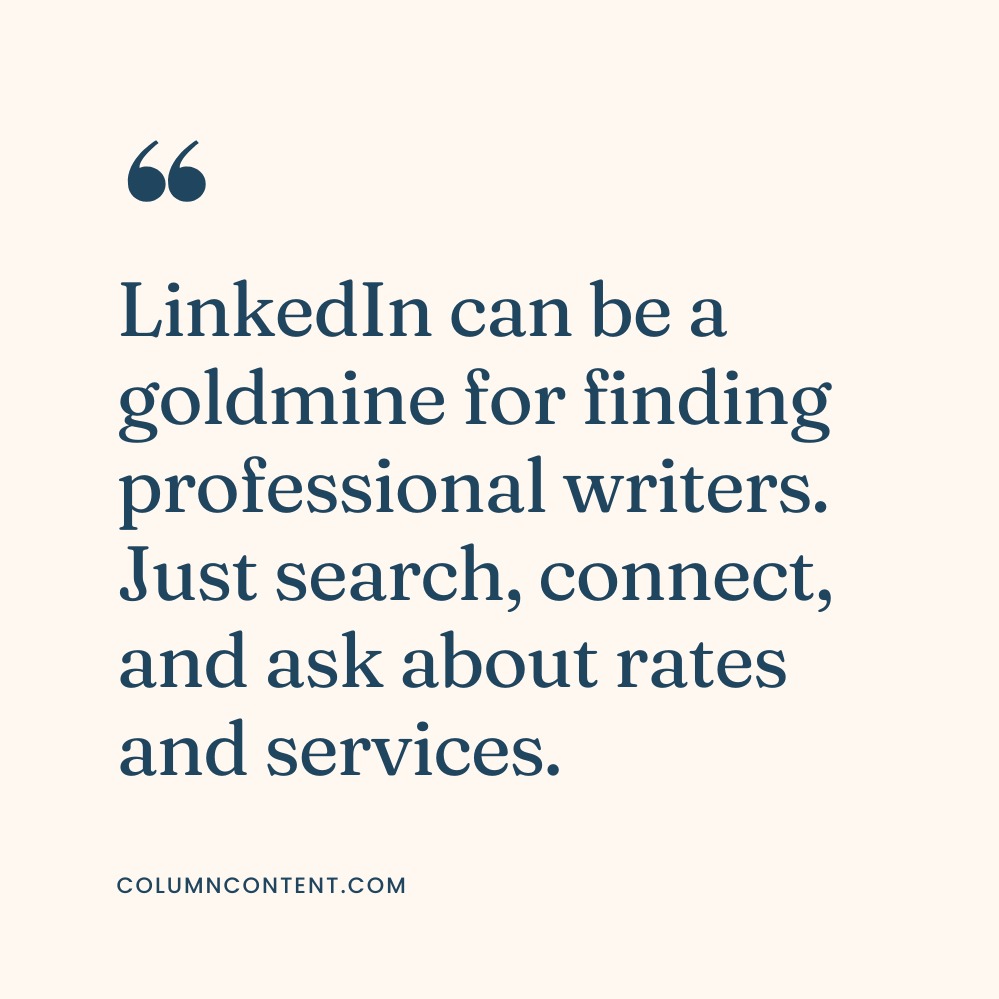
How the LinkedIn ghostwriting process works in 6 steps
The LinkedIn ghostwriting process is typically collaborative. Here’s a general overview of how it works:
- Find the right ghostwriter: You’ll first need to find a ghostwriter who understands your industry, audience, and voice. This might take a few interviews and writing reviews. We share tips on how to hire a LinkedIn ghostwriter in the next section.
- Schedule an initial consultation: After shortlisting your ideal ghostwriter, you’ll discuss your goals, brand, and preferred LinkedIn strategy. You’ll also agree on confidentiality agreements, pricing, and payment plans.
- Plan content: Next, you and your ghostwriter will create a content plan. This might include brainstorming topics, setting a posting schedule, and determining the tone and style of your LinkedIn posts.
- Revise content drafts: Your ghostwriter will write drafts based on the content plan. You’ll have the opportunity to review these drafts and provide constructive feedback. Your ghostwriter will then revise the content based on your feedback.
- Publish content: Once you’re happy with the final draft(s), your ghostwriter will post the content to your LinkedIn profile, or hand them over to you to post yourself. They might also help with other aspects of your LinkedIn presence, such as responding to comments or messages.
- Review and adjust: Ghostwriting is an ongoing process. You’ll continue to work with your ghostwriter to create new content, refine your strategy, and adjust to changes in your industry or audience.
How to hire a LinkedIn ghostwriter: 4 steps to follow
Hiring a LinkedIn ghostwriter is no easy task. You need someone who can capture your voice and communicate your ideas effectively.
Here’s how to approach the process:
1. Identify your exact needs
Before you start your search, be crystal-clear about what you want. Is it:
- Daily posts?
- An occasional article or blog post to position you as a thought leader?
- A monthly newsletter to share your insights?
Understanding your specific needs will help you find a ghostwriter who fits the bill perfectly.

2. Search for LinkedIn ghostwriters
The great thing is, you have tons of options. Here’s where to start your search:
- LinkedIn itself: LinkedIn can be a goldmine for finding professional writers. Just search, connect, and ask about rates and services.
- Freelance platforms: Sites like Upwork, Freelancer, or Fiverr are brimming with talented freelancers. You can browse through freelance writer profiles, read client testimonials, and check out work samples — all before making a hiring decision.
- Writing agencies: If you prefer a more thorough vetting process, consider a writing agency. They have high standards for their writers, so you’re practically guaranteed to get top-tier content.
- Referrals: You can ask your network for freelance ghostwriter referrals. These might come pre-vetted, de-risking the process for you.
3. Vet your ghostwriter
With your list of potential ghostwriters in hand, your next step is to vet them. Here’s how to do it:
- Examine their portfolio closely: All professional ghostwriters have a portfolio. Check each one out and assess their work against your needs. Does their style match your brand voice? Have they worked with other executives in your industry? Do they have a writing process to extract insights and craft impactful content?
- Ask for references: Getting feedback from past clients can help you understand the ghostwriter’s professionalism, timeliness, and work ethic. But some ghostwriters may not be able to share the names of their past or current clients due to NDAs. In such a case, see if the ghostwriter publishes good content on their own profile.
- Start with a test project: This lets you see first-hand how well the ghostwriter can translate your vision into compelling content. A handful of posts published over a week or a month should help you assess whether they are a good fit.
4. Discuss terms and prices
LinkedIn ghostwriter pricing can vary a lot. Rates depend on the writer’s experience, the complexity of the content, and the amount of work you need.
Be upfront about your budget, discuss terms, and get everything in writing to avoid future hiccups.
Hiring a LinkedIn ghostwriter is a major decision. But if you know exactly what you need, where to look, and how to vet candidates, you can find a pro who’ll skyrocket your LinkedIn presence.
Explore our LinkedIn ghostwriting packages for an idea of how much to pay.

How to collaborate with your LinkedIn ghostwriter
Working with a LinkedIn ghostwriter is not just about offloading your content writing. It’s a collaborative journey that requires clear communication and mutual understanding.
Let’s get into the nitty-gritty of how to make this collaboration work.
1. Provide a clear brief
The key to a successful ghostwriting relationship starts with a well-defined brief.
Communicate your objectives, target audience, voice and style preferences, and any topics or angles you’d like to explore.
Your brief serves as a roadmap for your ghostwriter, so the clearer it is, the better your writer will understand your vision.
2. Review and give constructive feedback
Once your ghostwriter hands in the first draft of each LinkedIn post, review it closely and provide constructive feedback.
- Do they nail your tone and style?
- Is the content aligned with your objectives?
- Would it sound plausible to a business insider?
Your input will help your writer fine-tune the content to better match your expectations in the future.
3. Meet regularly and communicate often
Your involvement isn’t limited to just providing feedback on drafts, but also sharing insights, updates, and new ideas.
Regular check-ins via email, video call, or telephone can lead to more cohesive and effective content.
At Column, we mandate a fortnightly check-in with each executive we work with as part of our SLA. This helps us craft incisive content for our clients.
4. Recognize their expertise
Trust your ghostwriter. They’re professional writers with a knack for storytelling and engaging audiences.
While it’s crucial to stay involved, remember to give them the space to experiment and deliver good work. They understand LinkedIn’s algorithm better than you do.
Let’s now unravel the secrets of maintaining authenticity while using ghostwriting services.
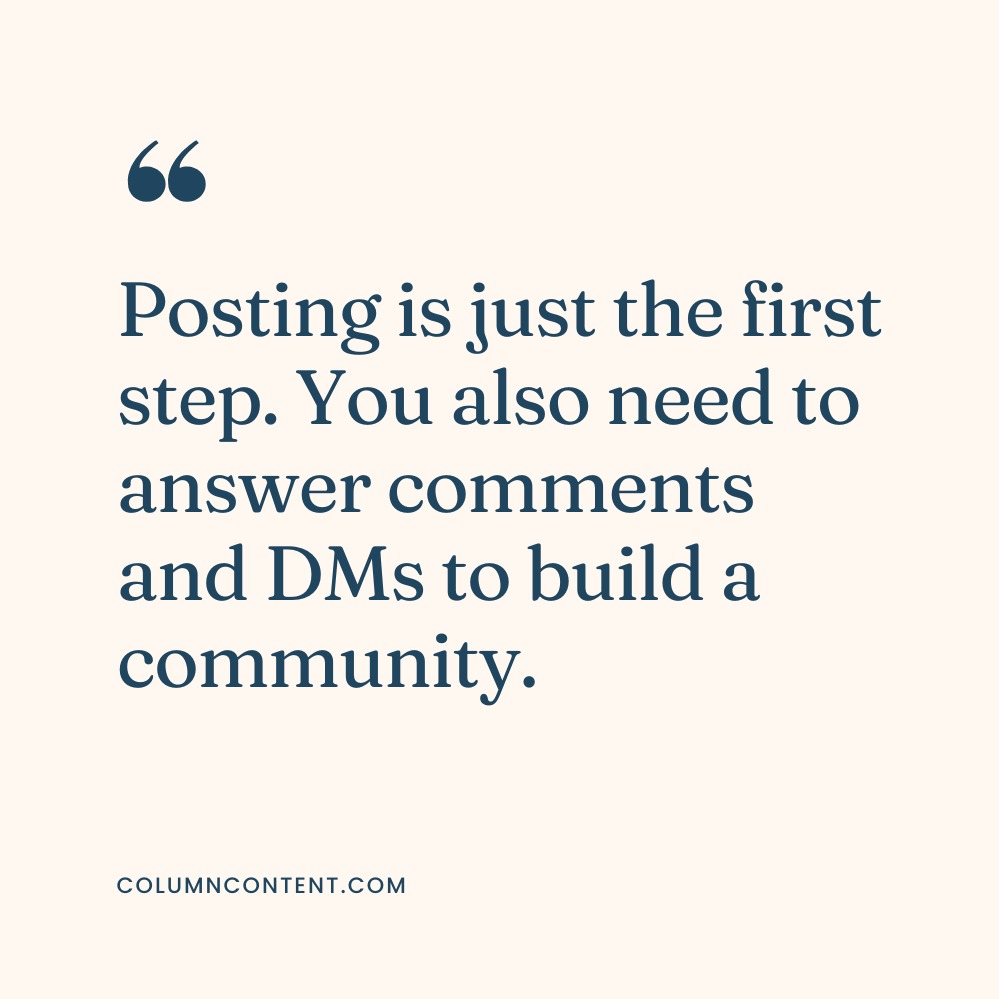
6 best practices for LinkedIn ghostwriting
LinkedIn ghostwriting is an art and a science. Let’s look at some best practices to help you succeed.
- Keep your voice real
- Choose the right time to post
- Reply to comments and messages
- Mix personal and ghostwritten posts
- Share media in your posts
- Consider LinkedIn ads
1. Keep your voice real
Ghostwritten content must sound like you. To do this, speak with your ghostwriter often. Tell them your personal stories, your thoughts about work, and your career path.
This helps them understand how you speak and think, which they can then use in your LinkedIn content.
And stay consistent — don’t mix American English with British English, for example, and ensure your ghostwriter uses typical terms you’d use in your daily speech (and none you wouldn’t use).
All of this takes a few posts to get right, but it gets easier as you both get familiar with each other and the process.
2. Choose the right time to post
When you post on LinkedIn can change how many people see and interact with your content. Your ghostwriter should know the best times to post for your audience.
They might need to look at when your audience is online or use LinkedIn’s tools to figure this out. Also, try to post regularly so your audience knows when to expect new content from you.
3. Reply to comments and messages
Posting is just the first step. You also need to answer comments and messages to build a community and show your audience you care about what they say.
Your ghostwriter can help with this, but adding your own touch to responses can make them more personal.
4. Mix personal and ghostwritten posts
Your ghostwriter can handle most of your LinkedIn content, but you should also share your own thoughts and updates sometimes. This keeps your LinkedIn profile personal and real.
Talk with your ghostwriter about this balance to make sure your LinkedIn profile stays true to you.
5. Share media in your posts
Images, videos, GIFs, and infographics can add color to your content. A charming selfie stops the scroll, while a simple infographic helps drive your business insights home.
Test different media types to see what works. Don’t shy away from carousels, as they have some of the highest engagement rates on LinkedIn.
6. Consider LinkedIn ads
If you have a post that’s performing particularly well, consider promoting it with LinkedIn Ads. This can help your content reach a wider audience.
LinkedIn introduced thought leader ads in 2023, allowing personal profiles to run ads under their company’s brand.
This can be a powerful way to leverage your growing LinkedIn influence and reach potential clients. People buy from people, not companies.
LinkedIn ghostwriting metrics: How to measure performance
No marketing strategy is complete without measuring its success, and LinkedIn ghostwriting is no different.
Let’s dive into how you can measure the impact of your ghostwriting efforts.
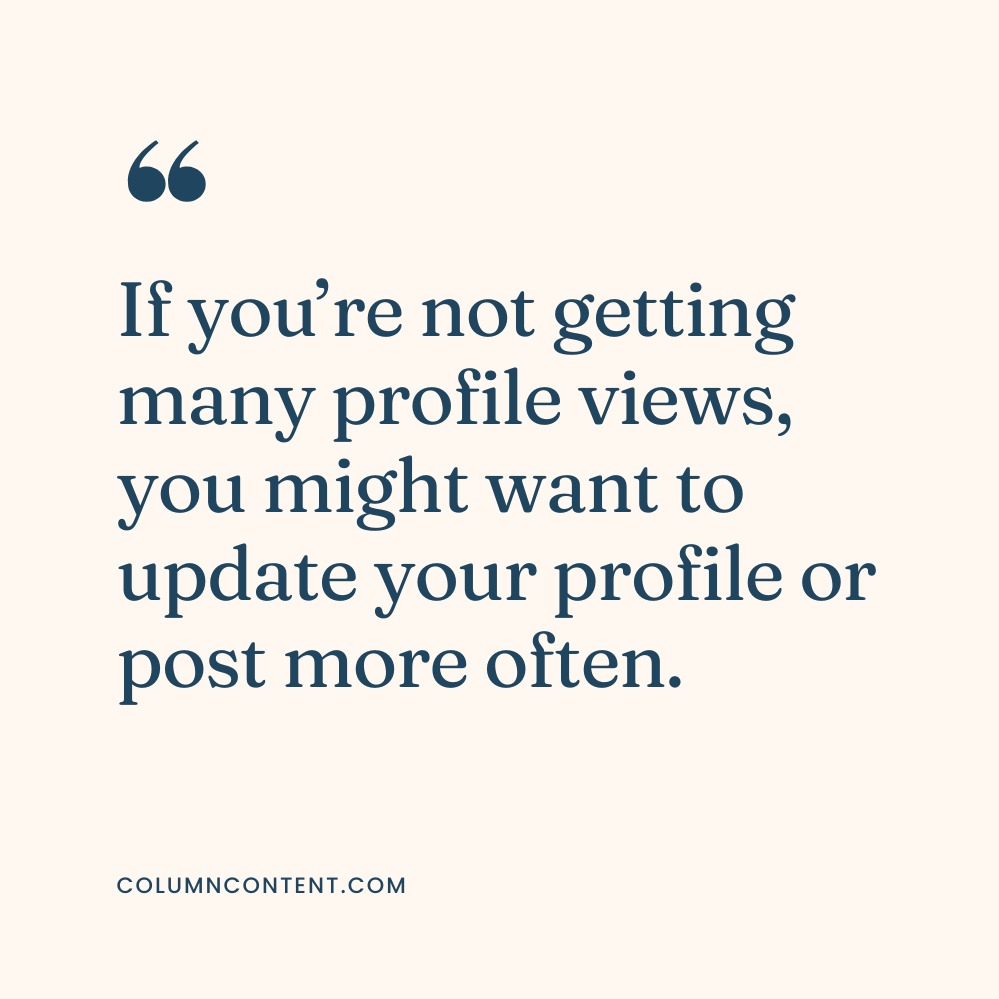
10 LinkedIn ghostwriting metrics to track
Some metrics you might want to track include:
- Connection requests: The number of LinkedIn users who are requesting to connect with you. An increase in connection requests within your target audience can indicate your content is resonating with them.
- Post engagement: This includes likes, shares, comments, and saves on your posts. High engagement means your content is sparking interest and conversation.
- Profile views: The number of people viewing your LinkedIn profile. A rise in profile views can suggest your content is driving people to learn more about you and your work.
- Followers: The number of people who follow your LinkedIn profile. More followers means more people are interested in seeing your content regularly.
- InMail responses: If you’re using LinkedIn’s InMail feature to reach out to potential connections, the response rate can be a useful metric to gauge interest in your offerings.
- Click-through rates: If you’re sharing links in your posts, track how many people click on those links to get insights on your content’s effectiveness.
- Mentions: The number of times other LinkedIn users mention you in their posts or comments. This can signal increased visibility and influence.
- Endorsements and recommendations: The number of skill endorsements or profile recommendations you receive can indicate your growing professional reputation.
- Inquiries: The number of inquiries or leads generated through LinkedIn. This could be via direct messages, comments, or emails triggered by your LinkedIn content.
- Sales: The number of sales or conversions you can trace back to your LinkedIn activities. This could be measured through tracking codes, customer surveys, or CRM data.
Once you know what to measure, you can use this information to change your strategy. For example:
- If a lot of people are interacting with a certain type of post, you might want to post more like it.
- If you’re not getting many profile views, you might want to update your profile or post more often.
- If most of your customers are coming from LinkedIn, you might want to increase your investment in LinkedIn content or ads.
7 tools to help you track LinkedIn content performance
Several tools and services can help you track the above metrics. Here are some tools that can help:
- LinkedIn native analytics: LinkedIn provides a range of analytics tools that can help you understand how your content is performing. You can access them by turning on Creator Mode and heading over to linkedin.com/dashboard on desktop.
- SHIELD: This tool offers comprehensive data to track your LinkedIn performance. It provides insights into post engagement, profile views, and follower growth.
- Dripify: Dripify is a LinkedIn automation tool that also provides analytics to track your LinkedIn performance.
- Octopus CRM: This tool provides LinkedIn analytics and also helps with lead generation and prospecting.
- Iconosquare: While primarily known for Instagram analytics, Iconosquare also offers LinkedIn analytics features.
- SocialInsider: This tool provides analytics for various social media platforms, including LinkedIn. It can help you understand your audience, track engagement, and optimize your content strategy.
- Inlytics: This is a dedicated LinkedIn analytics tool that provides insights into your LinkedIn data, visualizes post-performance, and even helps with scheduling posts.
The right tool for you will depend on your needs and budget. Many tools offer free trials and zero-cost plans, so explore each option and see which one fits your LinkedIn ghostwriting strategy best.
LinkedIn ghostwriting case studies
The very nature of LinkedIn ghostwriting makes it hard to source industry-wide stats, so we reviewed our own client profiles and asked around our network for examples.
Here are case studies of how some professionals boosted their personal brands with LinkedIn ghostwriting.
Case study 1: E-commerce
Client: Beth, a brand director and CHIEF member
Before engaging a LinkedIn ghostwriter, Beth had an inconsistent LinkedIn presence with minimal engagement.
She hired a ghostwriter to create regular, engaging content that highlighted her leadership journey and industry insights.
After six months of consistent, ghostwritten posts, Beth saw a 35% increase in profile views and a 53% increase in her follower count. Her posts’ engagement rate also increased by 41%.
This increased visibility led to a 22% increase in website traffic from LinkedIn and a 19% increase in revenue attributed to LinkedIn.
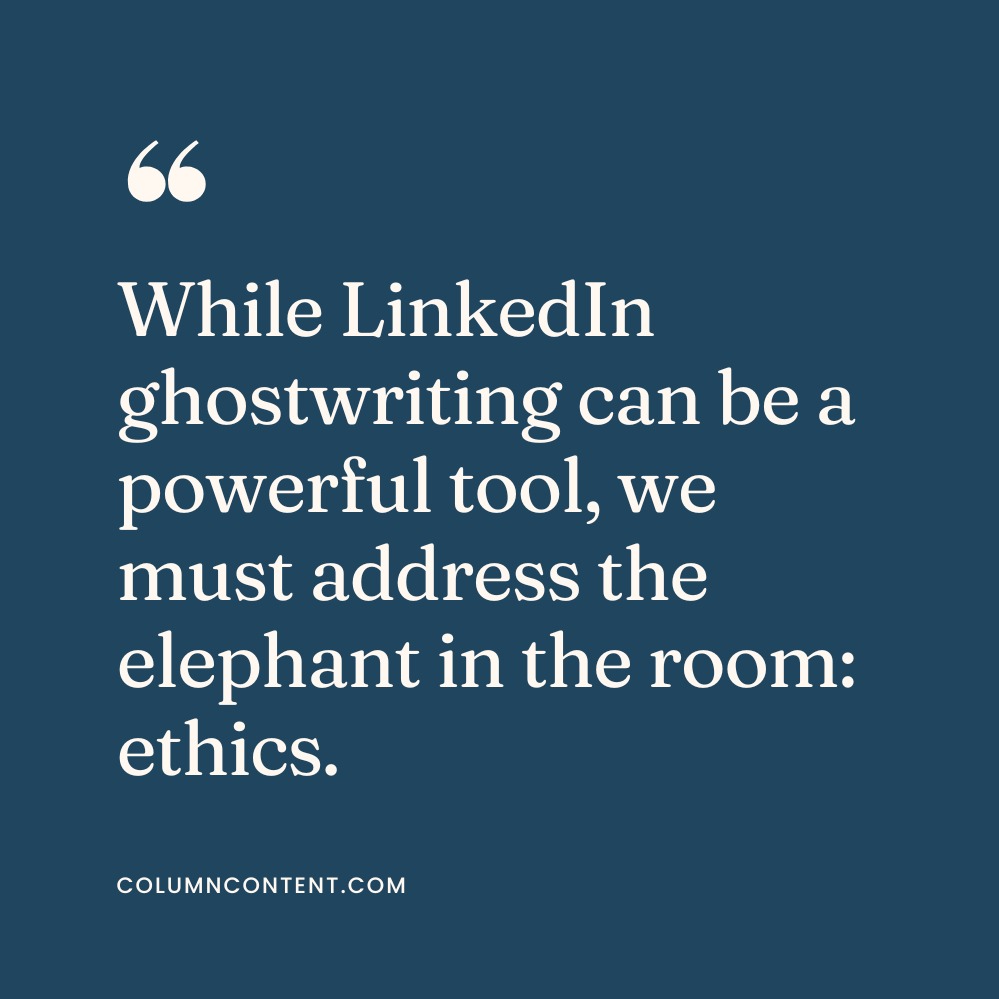
Case study 2: B2B SaaS
Client: David, a marketing director at a company offering sales software for small businesses
David’s LinkedIn strategy was initially focused on product promotion. He hired a ghostwriter to shift the focus to providing valuable content for small business owners, such as sales tips and industry insights.
Within a year, the average engagement rate on David’s LinkedIn posts increased by 68%. He also saw a 45% increase in demo requests initiated from LinkedIn.
His follower count grew by 82%, and he saw a 37% increase in website traffic from LinkedIn. This led to a 25% increase in new customer sign-ups traced back to LinkedIn activities.
Case study 3: Government consulting
Client: Angela, a consultant specializing in assisting businesses with government contracts
Angela’s LinkedIn presence was minimal before hiring a ghostwriter. After leaving her job at a consulting firm, she wanted to position herself as an industry expert and valuable resource for businesses seeking government contracts.
After a year of consistent, ghostwritten content around the intricacies of government contract procurement, strategies for successful bidding, and insights into regulatory compliance, Angela saw a 70% increase in profile views and a 100% increase in her follower count.
Her posts’ engagement rate increased by 50%. She also reported a 40% increase in inquiries via LinkedIn and a 30% increase in new client contracts that could be traced back to her LinkedIn activities.
These case studies demonstrate the potential impact of LinkedIn ghostwriting when done effectively.
Creating consistent, valuable content helped these professionals increase their visibility, engage their audience, and drive meaningful results.
The ethics of LinkedIn ghostwriting
While LinkedIn ghostwriting can be a powerful tool, we must address the elephant in the room:
Is it ethical to use a ghostwriter to create content you present as your own?
This question is not unique to LinkedIn or even to ghostwriting.
It’s a question that arises in any situation where someone uses another person’s labor to create something they then present as their own work.
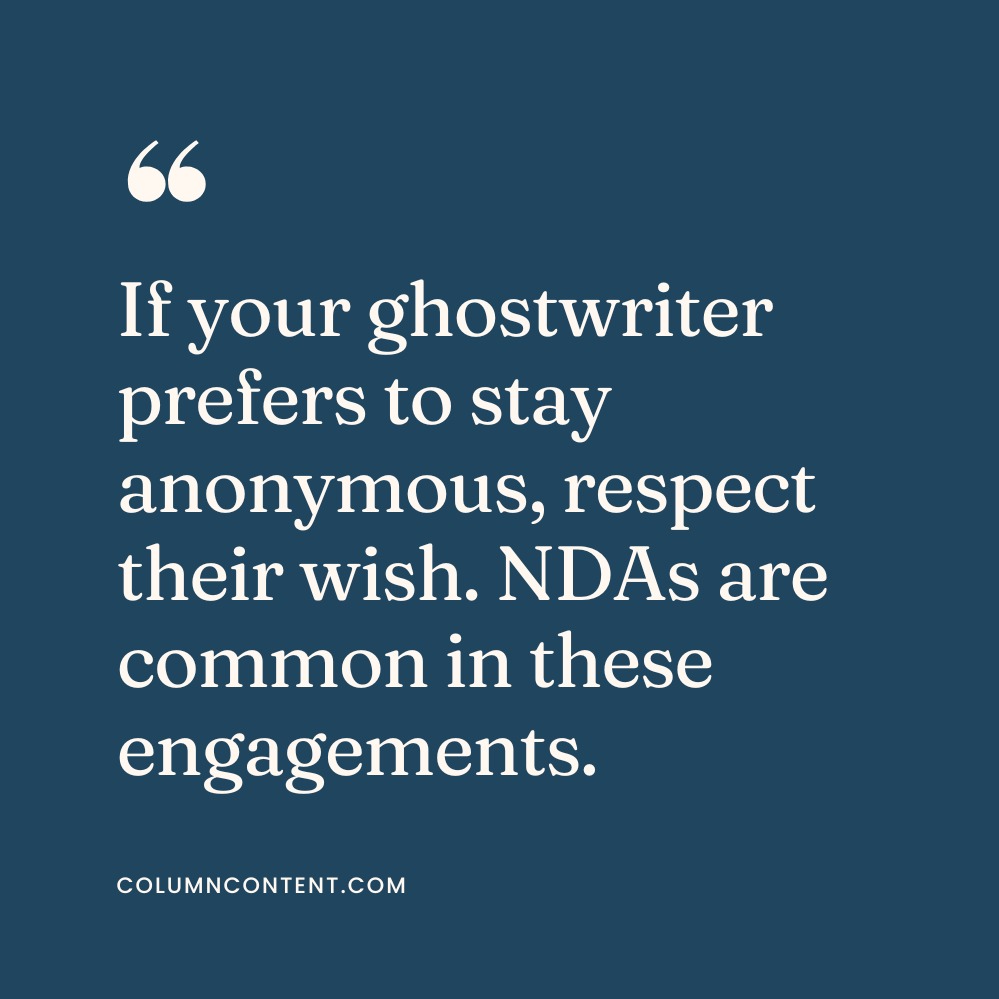
Consent and transparency are key
The ethics of using a ghostwriter largely depend on transparency and consent.
If all parties involved – you, your ghostwriter, and your audience – are aware of and comfortable with the arrangement, then it can be considered ethical.
In certain sectors like business, tech, or politics, audiences might not care who wrote the content as long as it’s valuable and informative. The use of LinkedIn ghostwriting services is not only common but also expected.
Ethical guidelines for LinkedIn ghostwriting
If you decide to use a ghostwriter for your LinkedIn content, here are some guidelines to do so ethically:
- Credits: Make sure your ghostwriter understands the terms of your arrangement. They should know how their work will be used and be comfortable with not receiving public credit for it.
- Quality: Ensure the content your ghostwriter produces is accurate, reliable, and valuable to your audience. Misleading or low-quality content is not only unethical but also harms your reputation.
- Confidentiality: If your ghostwriter prefers to stay anonymous, respect their wish. If you’d prefer they don’t discuss your arrangement with third parties, include it in your contract. Confidentiality goes both ways in ghostwriting agreements.
The ethics of LinkedIn ghostwriting are not black and white.
As long as you approach LinkedIn ghostwriting with respect for all parties involved and for the law, it can be an ethical and valuable tool for enhancing your LinkedIn presence.
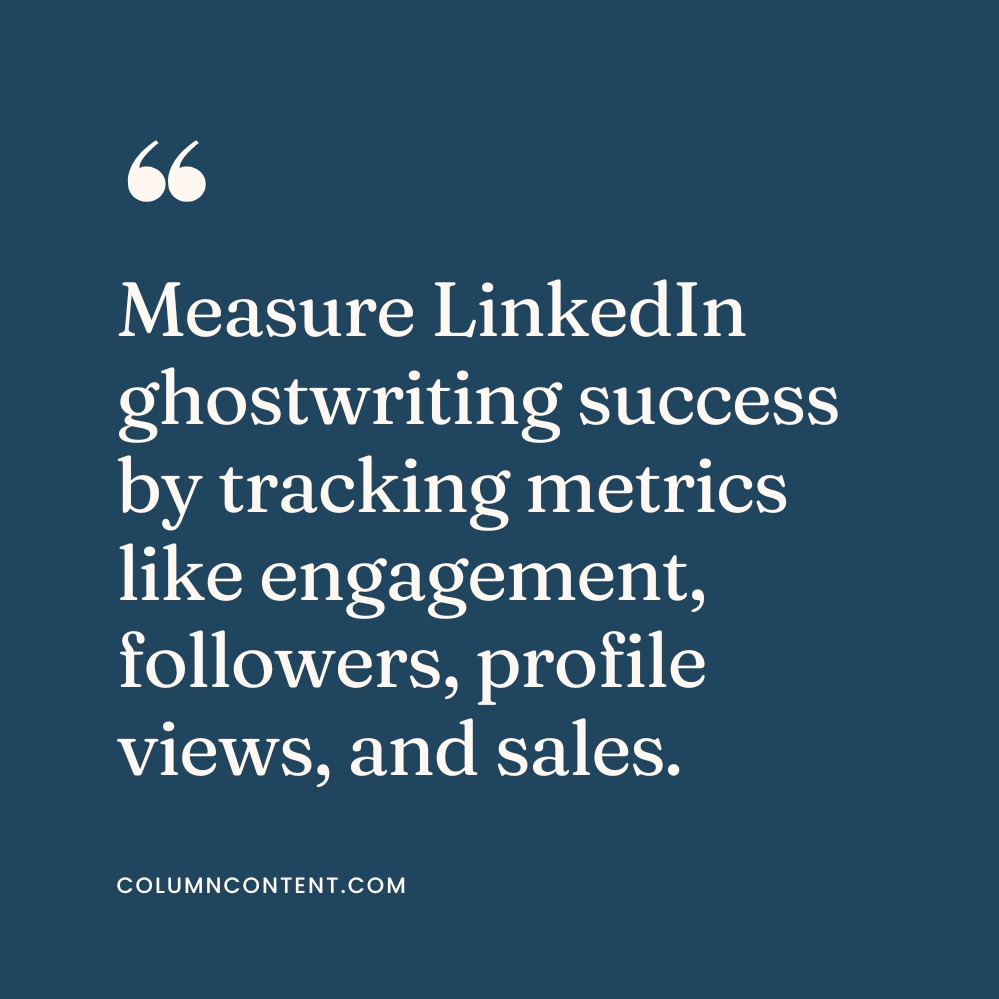
Summary: LinkedIn ghostwriting
Quality content is key to standing out on LinkedIn. If you struggle to create this on your own, LinkedIn ghostwriting could be your secret weapon.
Let’s take a moment to recap the key points we’ve covered about LinkedIn ghostwriting:
- Definition: LinkedIn ghostwriting is hiring a professional to create engaging content for your LinkedIn, saving time and boosting presence, while managing voice matching, confidentiality, and cost.
- Process: The LinkedIn ghostwriting process involves finding a suitable ghostwriter, initial consultation, content planning, revising drafts, publishing content, and ongoing review and adjustments.
- Hiring: Hiring a LinkedIn ghostwriter involves identifying your needs, searching for potential ghostwriters, vetting them through portfolios, references, and test projects, and discussing terms and prices.
- Collaboration: Collaborating with a LinkedIn ghostwriter involves providing a clear brief, reviewing and giving constructive feedback, maintaining regular communication, and recognizing their expertise.
- Best practices: Best practices for LinkedIn ghostwriting include maintaining an authentic voice, posting at optimal times, responding to comments and messages, balancing personal and ghostwritten posts, incorporating diverse media in posts, and considering LinkedIn ads for wider reach.
- Measurement: Measure LinkedIn ghostwriting success by tracking metrics like engagement, profile views, followers, and sales, and use tools like LinkedIn analytics and SHIELD for tracking.
- Evidence: LinkedIn ghostwriting case studies show professionals in e-commerce, B2B SaaS, and government consulting significantly boosting their profile views, follower counts, engagement rates, and business outcomes through consistent, engaging, and valuable ghostwritten content.
- Ethics: The ethics of LinkedIn ghostwriting hinge on transparency, consent, fair compensation, quality content, and confidentiality, with the potential for disclosure in certain situations.
Your journey to a more powerful, engaging LinkedIn profile starts now.
Take the leap and amplify your online presence with the help of a professional LinkedIn ghostwriter.
Read more about general ghostwriting if you’re considering writing a book. Happy ghostwriting! 👻





